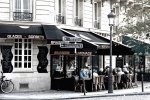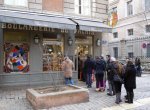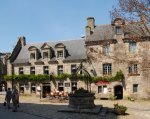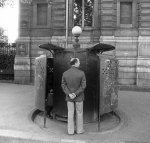paris
arrondissements
There are 20 Paris arrondissements, or districts. The first is in the centre from which the rest spiral outwards in a clock-wise direction. Most popular tourist attractions can be found in one of the central 8 arrondissements. The arrondissements are encircled by a ring road, the périphérique, beyond which lie the banlieues, the suburbs of Paris.
Paris arrondissements are named according to their number. For example, the 5th arrondissement, which would be written as 5ème (or 5e) in French. If you know the post code of any address in Paris, you can easily identify which arrondissement it is located in because Parisian post codes take the form of – 75XXX – with the last two digits being equal to the arrondissement (e.g. 75006 for the 6th arrondissement).
The areas to the west of the city (Neuilly, Boulogne, Saint Cloud, Levallois, Versailles) are the most desirable and they are generally more peaceful than the city. Each of the neighbourhoods has its own special character, briefly summarised here.
1st Arrondissement
The ultimate Paris experience, with the Tuileries gardens, the
Louvre Museum, Royal Palace, Pont des Art, Place de Vendôme, Rue de Rivoli, and
a long shot view from the Place de la Concorde of the Eiffel Tower overlooking
the Seine.
This is the least populated of the arrondissements and is at the geographical centre of the city, and also comprises the western tip of the Île de la Cité, including the magnificent Sainte-Chapelle and the Conciergerie.
2nd Arrondissement
Although home to a number of historic shopping arcades this
is primarily a business district, with the Palais de la Bourse – the former
stock exchange – as its most notable landmark.
The second is the city’s smallest arrondissement where the trendy Etienne Marcel and Rue Montorgueil reside; two bustling pockets of the 2nd that are flush with cafés and shopping.
3rd Arrondissement (The Marais)
Luxury independent designer boutiques contrast the plethora
of vintage shopping that sell second-hand goods by the kilo, as well as haute
cuisine at celebrated restaurants and local corner brasseries. But, be warned,
this neighbourhood is notoriously pricey.
Another small arrondissement, the 3rd contains the northern part of the historic Marais district. The Conservatoire National des Arts et Métiers (National Conservatory of Arts and Crafts), the Picasso Museum and the Carnavalet Museum, devoted to the history of Paris
4th Arrondissement
The 4th arrondissement contains the southern part of the
medieval Marais district as well as the Île St-Louis and the eastern part of
Île de la Cité, the oldest part of Paris. This area is very popular with the
Notre-Dame Cathedral, the Place des Vosges, the city hall and the Gothic Tour
St-Jacques, contrasting with the modern Centre Pompidou.
5th Arrondissement (Latin Quarter)
The impressive Rue Mouffetard, with its market, boutique
hotels, and the old-world charm of the Latin Quarter, is frequently teeming
with students from the nearby universities and prestigious high schools.
The area's popular avenue, the Boulevard St-Michel, marks the border with the 6th arrondissement. The most famous sight in the 5th is the Panthéon, but there are many other noteworthy sights such as the Val-de-Grâce church, the St-Etienne-du-Mont church, the Cluny Museum, the Roman-era Arènes de Lutèce and the city's botanic garden, the Jardin des Plantes.
6th
Arrondissement (Saint Germain-des-Prés)
Once the quarter for bohemians and intellectuals, the 6th
has experienced a certain amount of gentrification, and is today one of the
most expensive neighbourhoods of Paris.
One of the world's greatest parks, the Jardin du Luxembourg, makes this arrondissement popular with locals and visitors alike, which also hosts a number of landmarks such as the Odéon Theatre and the Saint Sulpice church. The 11th-century Saint-Germain des Prés is the oldest abbey church in Paris.
7th Arrondissement (Palais-Bourbon)
Government institutions and major landmarks dominate this arrondissement.
The most famous is the Eiffel Tower, the Invalides, with its museums and
Napoleon's tomb, and the Musée d'Orsay, the Musée Rodin and the Musée du Quai
Branly, which is dedicated to non-European cultures. The Palais Bourbon
(National Assembly), École Militaire (Military School) and the UNESCO
headquarters can also be found in the 7th arrondissement.
The 7th is outstanding. Anything as beautiful as this classically Parisian district is pricey but also a little sleepy.
8th Arrondissement
This district is expensive and loaded with tourist attractions.
The Champs-Élysées – arguably the world's most famous boulevard – cuts through
this arrondissement from the Place de la Concorde to the Arc de Triomphe.
Bordering the Champs-Élysées are the magnificent Grand Palais and Petit Palais,
as well as the Élysée, the presidential Palace. The arrondissement also
features the temple-like Madeleine church and the romantic Monceau Park.
The area around the Champs-Elysèes has many shops and throngs of tourists, while in the area to the east, between the Champs-Elysees and Place de la Madeleine, lies a mixture of 19th-century buildings intermingled with businesses. This area is in many ways similar to parts of the 16th, but is generally less showy.
9th Arrondissement
A multifaceted arrondissement, with prestigious boulevards
in the south and the not so prestigious Pigalle area – home of a diminishing
Red Light district – in the north.
Pigalle attracts its share of tourists thanks to the nearby Moulin Rouge (18th arr). Just as famous, but located in the south part of the 9th arrondissement, is the former Opéra Garnier, a magnificent opera house. Nearby is the Galeries Lafayette, a well-known department store.
10th Arrondissement
Two of Paris's main railway stations – the Gare de l'Est and
Gare du Nord – can be found here. This is a down to earth arrondissement with
the Canal Saint-Martin and the neoclassical Saint-Vincent-de-Paul church as
some its more interesting sights. This multi-cultural neighbourhood contains a
bohemian element. The cafés and restaurants along the Canal Saint-Martin make
it a popular destination for both Parisians and tourists.
11th Arrondissement (Oberkampf)
In many ways similar to the 9th, the 11th arrondissement is young, fun and vibrant. When looking for a
place to stay, be careful because outside the Oberkampf, this neighbourhood is
not completely gentrified, so it might be a little too lively for anyone
without a working knowledge of vernacular French.
The Oberkampf district is better known for its nightlife than its landmarks, but it does contain the Cirque d'Hiver (winter circus) and the St Ambroise church.
12th Arrondissement
The arrondissement is bordered by the expansive Vincennes
park on the east. The Promenade Plantée, an elevated greenbelt that stretches
for almost 3 miles from Place de la Bastille and the indoor arena, Palais
Omnisports de Bercy are also located here.
This is one of the larger arrondissements in Paris, and offers an influx of affordable accommodation such as hostels, hotels and apartment rentals.
13th Arrondissement (Chinatown)
The 13th is a multi-cultural residential neighbourhood which
includes Chinatown and the Bibliothèque François Mitterand. The modernist Place
d’Italie is the site of one of the most ambitious French urban renewal projects
and the hidden Butte aux Cailles neighbourhood with its cobblestone streets and
numerous restaurants, cafés and nightlife, preserves a village-like atmosphere.
14th Arrondissement
A lively arrondissement, especially around the Montparnasse
Boulevard, where the Tour Montparnasse (in the adjacent 15th arrondissement)
dominates the skyline. Not far from this skyscraper is the Montparnasse
Cemetery, where many famous French citizens are buried. A popular tourist
attraction in this arrondissement are the catacombs, which can be accessed at
the Denfert-Rochereau square.
The 14th gets a bad press for being lacklustre and too residential. But, while it’s not the most animated district in the city, there is much to be said about its sleepy charm and quiet streets, especially after a long day of sightseeing.
15th Arrondissement
This is the largest of the arrondissements, both in size and
population. The tallest skyscraper in the centre of Paris, Tour Maine
Montparnasse is located here. The Parc André Citroën in the west is one of
Paris's most interesting modern parks.
16th Arrondissement
The 16th has the reputation of being the richest, and only
the better-off are able to pay the high rents here. The district is bordered by
the enormous Bois de Boulogne park to the west. A big draw is the Palais de
Chaillot, from where there is a great view of the Eiffel Tower. The Palais de
Chaillot is also home to several museums and a theatre. The Musée Guimet, a
museum with a collection of Asian art and the Palais de Tokyo, home to modern
art is nearby. Another notable museum is the Musée Marmottan, with a collection
of impressionist art.
A stone’s throw from the Arc de Triomph, tt’s residential and quiet with a large population of American families who have been relocated professionally.
17th Arrondissement
Another neighbourhood that is making a name for itself,
thanks to the up-and-coming Batignolles area that houses many established
French artists and writers.
18th Arrondissement
If you plan on staying in this district, make sure you are
closer to the more populated Pigalle or Blanche metros. Just be wary about wandering
the desolate side streets at night.
Montmartre, the once bohemian and still village-like district is often inundated with tourists. The Sacré-Coeur basilica and the Place du Tertre are the biggest tourist draws. Another famous sight here is the Moulin Rouge, located at the border of the 9th arrondissement.
19th Arrondissement
One of Paris's most interesting parks, the Parc des
Buttes-Chaumont, is in the middle of this large arrondissement. A residential neighbourhood
with many ethnic restaurants and shops. Parc de la Villette is located here with its Cité des Sciences et de l'Industrie
museum and cultural centre.
20th Arrondissement
This mostly residential, cosmopolitan
arrondissement has no real attractions but it still gets its fair share of
tourists thanks to the Cimetière du Père-Lachaise, the city's most famous
cemetery. Traditionally working class, this outlying district is popular with
artists and creative types. Ethnic shops, culture and restaurants abound.
Recent Articles
-
French Food and Drink - No BS Guide for lovers of Food, Wine, Liqueurs
Aug 28, 19 03:18 AM
Our guide to French food and drink for those who love traditional French food along with our no BS guide to understanding French wine and liqueurs
-
Things To Do In Carcassonne The Ultimate Tourist Guide
Aug 24, 19 06:26 PM
The ultimate tourist guide to things to do in Carcassonne when you visit this wonderful town in Aude France. Discover the places to go and see in Carcassone.
-
Lyon Old Town Guide to Vieux Lyon
Aug 18, 19 07:48 AM
Your complete guide to Lyon old town otherwise known as the Vieux Lyon. Don't miss this amazing part of the city if you're visiting Lyon in France.
-
18 French Villages You Must Visit Most Beautiful Villages in France
Aug 17, 19 06:31 AM
Our guide to the 18 most beautiful French villages you simply must visit. Loads of info, photos and facts in our ultimate villages in France tourist guide
-
What a Pissoir - The True Story of France's Unique Urinals
Aug 13, 19 03:47 PM
Is there anything more French than a pissoir? Sadly on the decline nevertheless the pissor is an endring image of the country. This is their story





